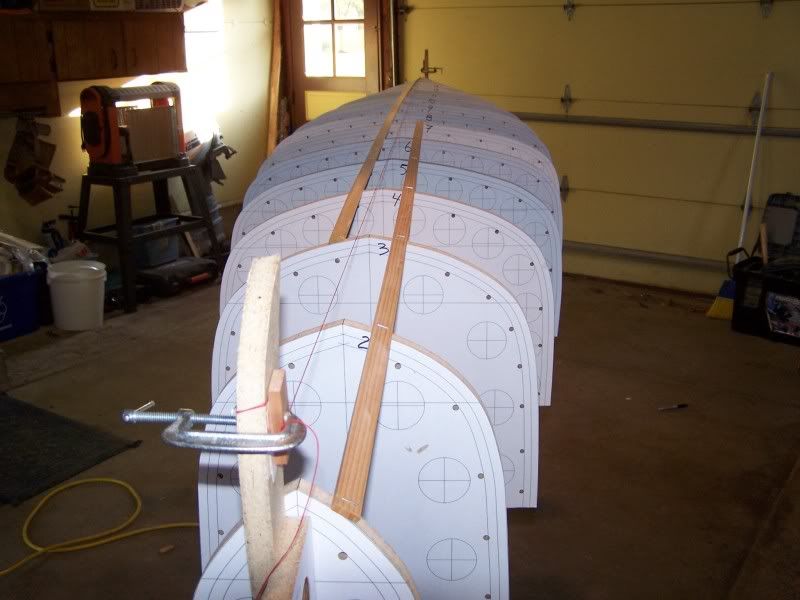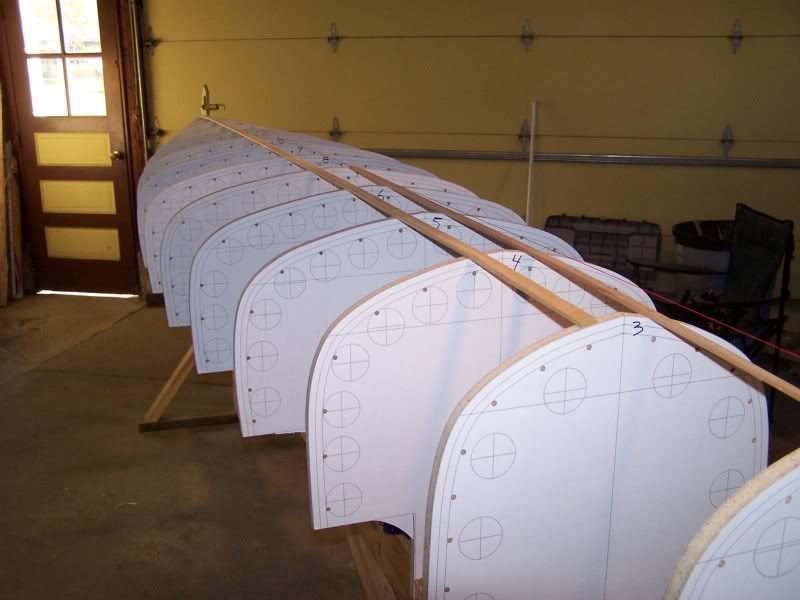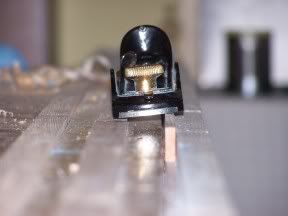James Hanrahan wrote:Hi Tim, On your forms you have several lines, small spaced holes and also large circles spaced evenly apart. Could you please explain the purpose of these markings?
Thanks
James
Hi James - good catch.
The horizontal lines would be the waterline location on each form (that one you know). The vertical lines are of course the centerlines of the form. There are two offset lines which go around the curve of the forms. Those were "construction lines" where I was thinking of using a router to inset a groove for clamping for stapless building. I elected not to go that route in my stapless attempts but never erased the lines in my software.
The large circles were also a thought experiment for providing clamping opportunities for stapless construction. I would have run dowels through them to provide a clamping purchase with sliced ribbons from tire inner tubes. Again I elected not to go that route and simply forgot to erase them before plotting.
The small holes actually are what I am using for rubber band clamping and it seems to be working. I got the idea and received documentation from Phil Westendorf who has built a couple projects this way.
The holes are drilled on my drill press (ShopSmith) at 1/4" and plugged with 1/4" dowels with 1" exposed on either side of each form. The rubber bands basically start at a dowel and wrap OVER the strip and down around and under the hull back up to another dowel pin tight enough to provide clamping pressure. This provides sufficient clamping pressure and holds the hull fast against the forms. This is done at each form. I'll be able to post pics in a few days to document that.
The rubber bands are sizable. They are #117 sized (7 1/2" x 1/8") at any Office Max type store.
Same as in the last build I'll bevel a strip, glue it to the previous strip, clamp it and go over to the other side and work there. By the time I'm done there I can come back over and add another strip without damaging things. By that time the glue had set up pretty good. Only takes a couple minutes to bevel a strip, then dry fit.
There may be spots where I am forced to do staples but I'll try every other possible means before doing that.
Happy building!


